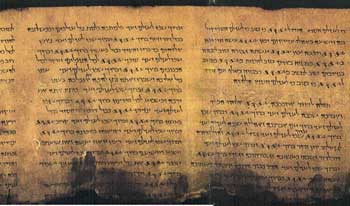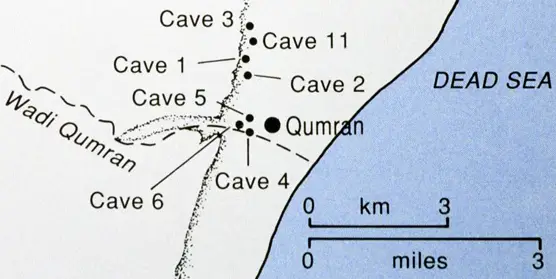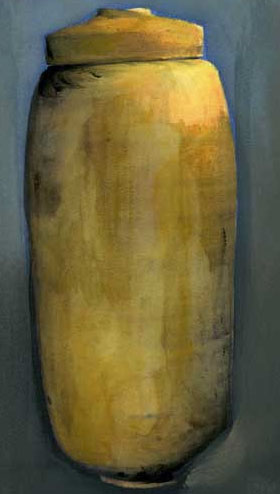The Dead Sea Scrolls
One of modern Judaism's most precious possessions is the Dead Sea Scrolls, a collection of more than 30,000 fragments that together make up nearly 1,000 documents written by Jewish people nearly 2,000 years ago.  The Scrolls, which now reside in the hands of a select Jewish scholars and as part of a display at the Israel Museum in Jerusalem, are thought to have been written during a period of a few hundred years, from the 3rd Century B.C. to the 1st Century A.D. Most scholars think that the writers belonged to ancient Jewish sect called the Essenes. (This belief has been challenged in recent years, however.) The Scrolls, which now reside in the hands of a select Jewish scholars and as part of a display at the Israel Museum in Jerusalem, are thought to have been written during a period of a few hundred years, from the 3rd Century B.C. to the 1st Century A.D. Most scholars think that the writers belonged to ancient Jewish sect called the Essenes. (This belief has been challenged in recent years, however.)The Scrolls were found initially by accident. A young man named Muhammed edh-Dhib, whose job it was to keep track of goats, stumbled on a bunch of clay jars in a cave near Qumran, a settlement in what is now Israel, 13 miles east of Jerusalem, near the Dead Sea. The young man took a handful of scrolls back to his settlement, where no one could decide what to do with them. Eventually, they ended up in the hands of scholars who realized their importance. The cave that the young goat-herd discovered has been termed Cave 1. Out of excavations of this cave came several famous scrolls, including a copy of the book Isaiah, and lots of jars and bowls.  Excavations continued in the area for the next decade or so, with more caves and manuscripts being discovered. Eventually, the caves numbered 11. The cave that has so far yielded the most documents is Cave 4, in which have been nearly 15,000 fragments from 500 different documents. Excavations continued in the area for the next decade or so, with more caves and manuscripts being discovered. Eventually, the caves numbered 11. The cave that has so far yielded the most documents is Cave 4, in which have been nearly 15,000 fragments from 500 different documents.Cave 3 continued the Copper Scroll, which reads like an ancient Indiana Jones quest. A total of 67 hiding places are described and purported to contain gold, silver, copper, and other riches. However, none of these locations has so far been found. Cave 11 has yielded what is called the Temple Scroll, because a large part of it describes the construction of the famed Temple of Jerusalem. One of the few mostly intact scrolls, it measures nearly 27 feet. The scrolls are made of papyrus, parchment, or animal skins. The writing was done using carbon-based ink, from right to left on the page, without punctuation or, in many cases, spaces between words — making it all the more difficult for scholars to translate. Many of the Jewish texts are, of course, found in the Christian Bible. Fragments of every Old Testament book but Esther have been found in the Qumran caves.  Not all texts are found in the Bible, however. The fragments contain: Not all texts are found in the Bible, however. The fragments contain:
Many of the scrolls have been published, with the volumes residing in either Israel, the U.S., or in the hands of private collectors. |
|
Social Studies for Kids
copyright 2002–2024
David White




